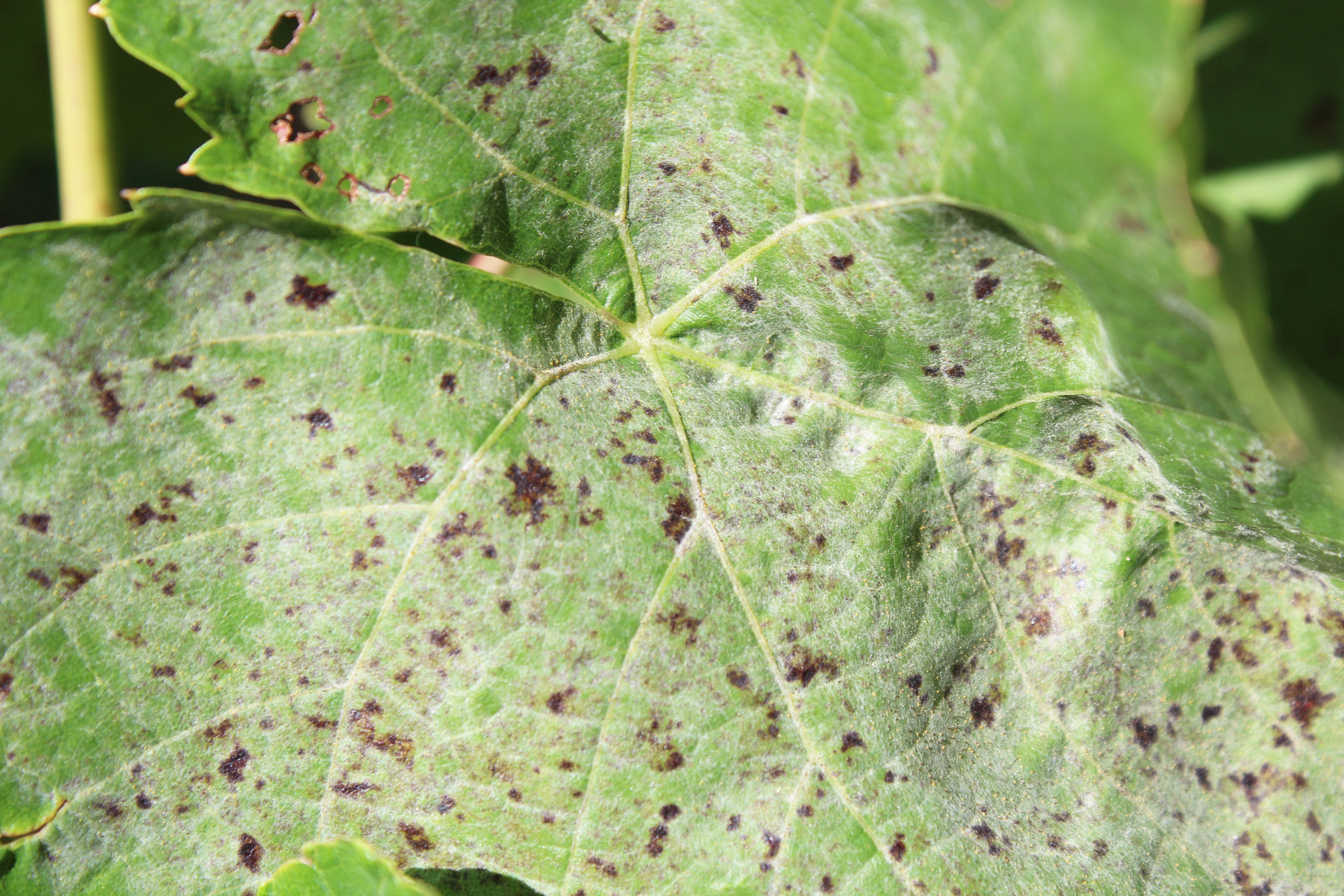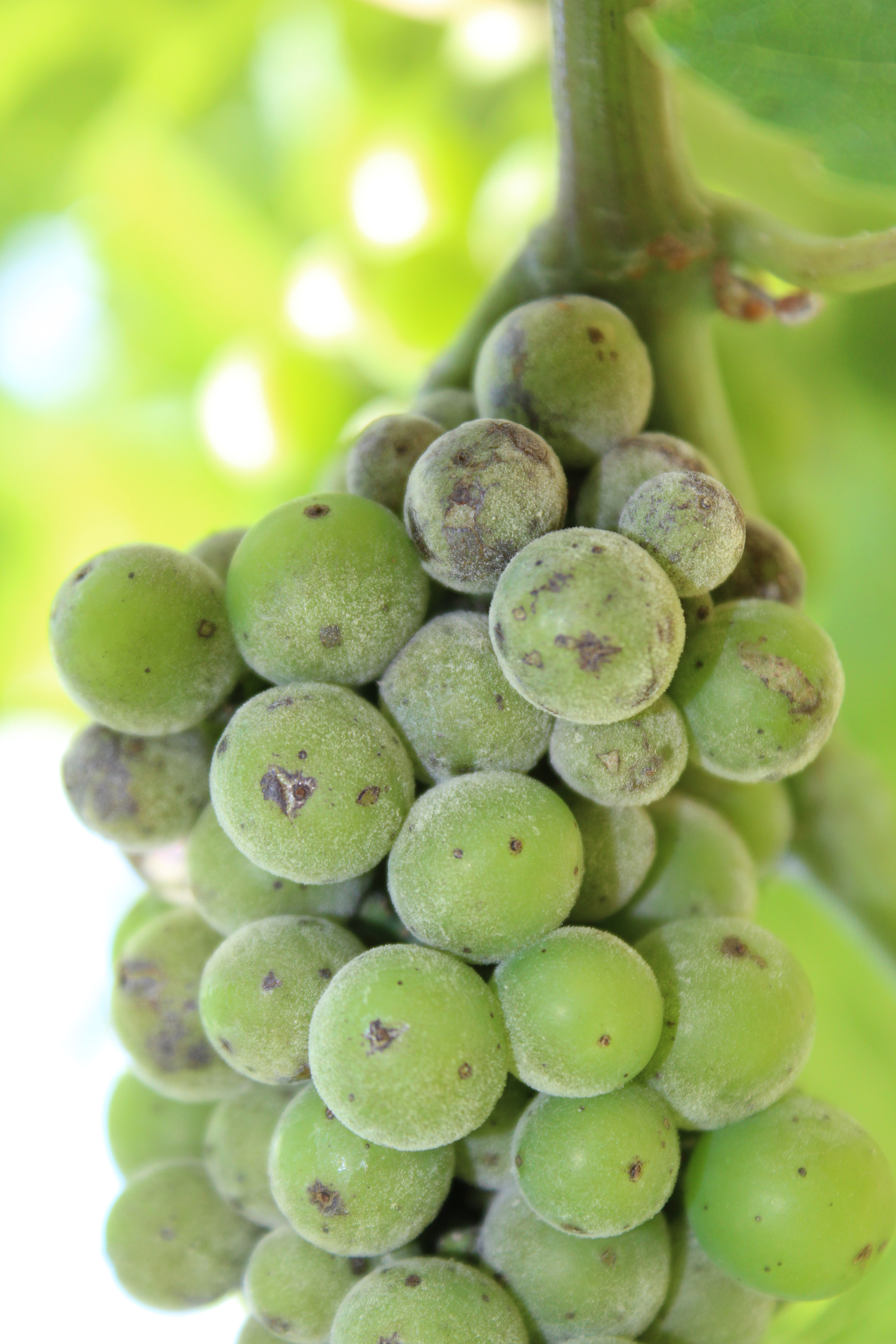Powdery Mildew of Grapes
Return to Diseases
Powdery mildew (Erysiphe necator) is a fungal disease that infects succulent tissues and spreads throughout the season. Losses result from fruit infection and reduced winter hardiness if disease is severe. Infected berries can become misshapen, develop scar tissue on cuticles, or split. Berry infections begin at bloom and extend until a few weeks after bloom. Infected berries become more susceptible to Botrytis bunch rot and sour rot. Cluster stems and leaves are susceptible to infection throughout the season. A powdery fungal growth covers infected tissues; leaves become curled, distorted, and stunted. High humidity promotes spore (conidial) development, but humidity as low as 40% is sufficient for infection; disease can occur at low humidity levels when other diseases are typically suppressed. The fungus overwinters on infected stems or buds as survival structures (chasmothecia, syn cleistothecia) that form during late autumn. In early spring, ascospores are released and primary infections begin the disease cycle.

Powdery mildew growth on foliage.
(Photo: Nicole Gauthier, University of Kentucky)

Powdery mildew symptoms and signs late in the season.
(Photo: Nicole Gauthier, University of Kentucky)

Powdery mildew growth on berries.
(Photo: John Strang, University of Kentucky)

Close-up of powdery mildew on fruit.
(Photo: Nicole Gauthier, University of Kentucky)
Management:
- Practice proper sanitation (remove and destroy infected berries and tissue).
- Increase air circulation to encourage drying of plant tissues (pruning, thinning, spacing, managing weeds).
- Apply fungicides (beginning at bud break).
